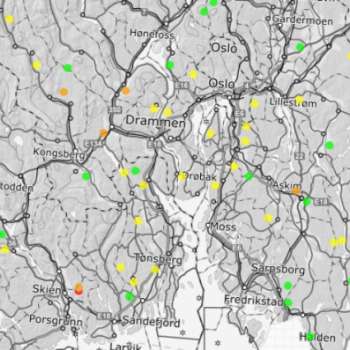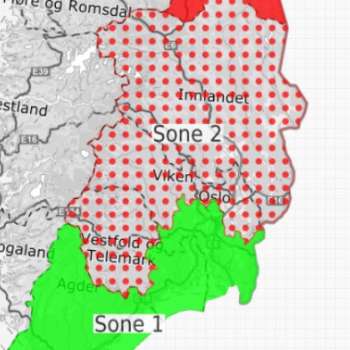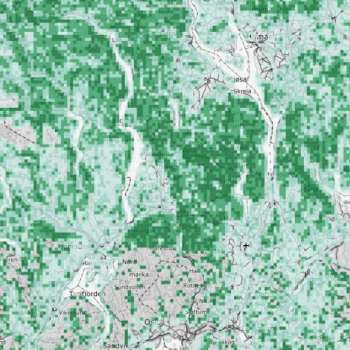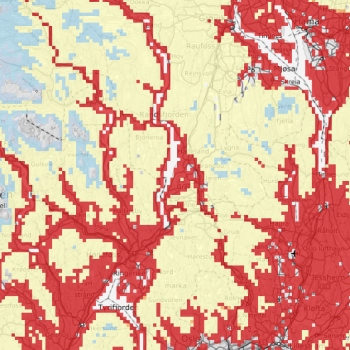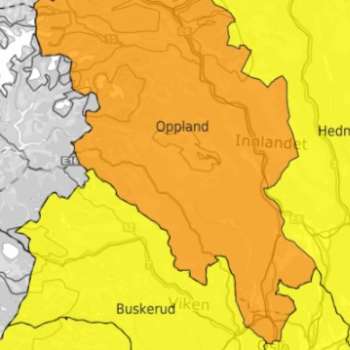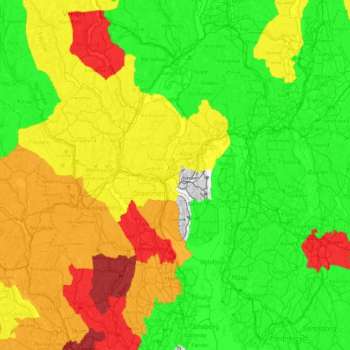
Bark beetle monitoring
The Eurasian spruce bark beetle (Ips typographus) can attack and kill huge numbers of healthy spruce trees when the conditions are right. Ips typographus had a large outbreak in Norway in the 1970’s, and since 2016 it has killed millions of spruce trees in southern Sweden and on the European continent.

Several factors affect the risk of having an Ips typographus outbreak in an area:
- the number of beetles available to attack trees
- the occurrence of prolonged droughts weakening tree defenses and making trees more susceptible to attack
- high temperatures enabling beetles to complete two generations and thus have two attack periods each summer
- the volume of mature spruce trees vulnerable to attack, and
- the area’s attack history, e.g. whether it was badly hit during the outbreak in the 1970’s.
On the map “Sonevis varsel” The Norwegian Agriculture Agency warns about the risk of widespread tree mortality due to Ips typographus. Updated warnings are presented four times throughout the season from late May to mid-August. The risk warnings are based on advice from NIBIO. Other maps present underlying factors influencing outbreak risk. You can read more about these maps by clicking on the map images further down the page or on the information symbol ("i") next to each map layer in the forest portal in Kilden.
The first of four risk warnings for 2023 is now available in Kilden (see link below).
For background information about risk warnings and their geographical distribution, follow the “Risk warning” link below (beneath "Map layers in Kilden").
Publications
Abstract
No abstract has been registered


